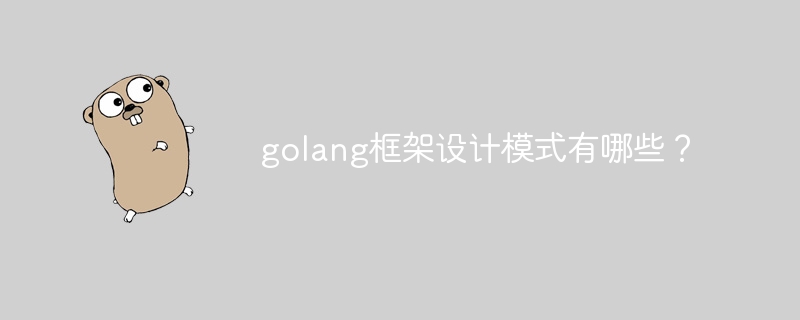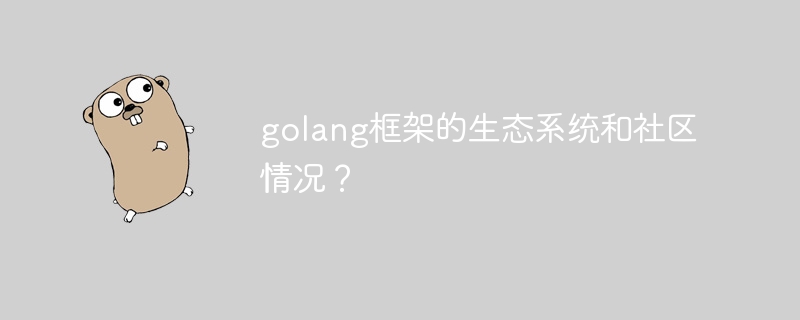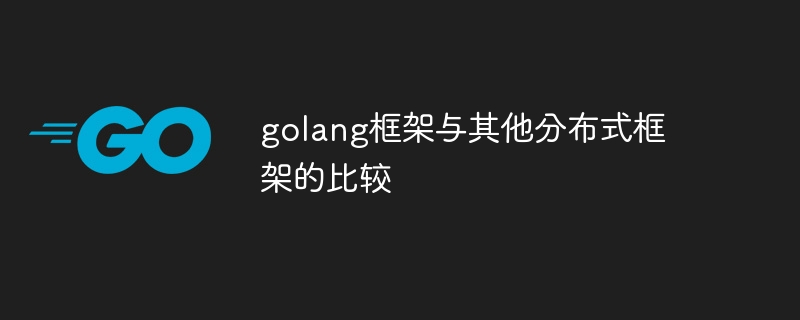设计模式是 Go 框架中编写可维护和可扩展代码的良好实践。其中包括:单例模式:确保全局范围内只有一个类的实例。工厂模式:创建对象的实例,与对象的创建过程分离。观察者模式:允许一个对象订阅另一个对象的事件。

Go 框架中的设计模式
Go 作为一个现代化的编程语言,提供了强大的工具和功能来构建可维护和可扩展的应用程序。设计模式是编写代码的良好实践,它们提供了可重用的解决方案,使开发人员可以专注于解决特定问题。
单例模式
单例模式确保全局范围内只有一个类的实例。它通常用于创建配置对象或数据库连接等资源。
type Singleton struct{}
var instance *Singleton
var once sync.Once
func GetInstance() *Singleton {
once.Do(func() {
instance = &Singleton{}
})
return instance
}工厂模式
工厂模式创建对象的实例,它可以使应用程序与对象的创建过程分离。这允许应用程序根据配置或条件选择创建哪种对象。
type Factory interface {
CreateProduct(string) Product
}
type Product interface {
GetName() string
}
type ConcreteFactory1 struct{}
func (f *ConcreteFactory1) CreateProduct(name string) Product {
return &ConcreteProduct1{name: name}
}
type ConcreteFactory2 struct{}
func (f *ConcreteFactory2) CreateProduct(name string) Product {
return &ConcreteProduct2{name: name}
}
func main() {
factory1 := &ConcreteFactory1{}
product1 := factory1.CreateProduct("Product 1")
fmt.Println(product1.GetName())
factory2 := &ConcreteFactory2{}
product2 := factory2.CreateProduct("Product 2")
fmt.Println(product2.GetName())
}观察者模式
观察者模式允许一个对象订阅另一个对象的事件。当发布者(目标)的状态发生变化时,它会通知所有订阅者(观察者)。
type Publisher struct {
subscribers []Subscriber
}
func (p *Publisher) AddSubscriber(s Subscriber) {
p.subscribers = append(p.subscribers, s)
}
func (p *Publisher) NotifySubscribers() {
for _, s := range p.subscribers {
s.Update()
}
}
type Subscriber interface {
Update()
}
type ConcreteSubscriber1 struct{}
func (c *ConcreteSubscriber1) Update() {
fmt.Println("Subscriber 1 notified")
}
type ConcreteSubscriber2 struct{}
func (c *ConcreteSubscriber2) Update() {
fmt.Println("Subscriber 2 notified")
}
func main() {
publisher := &Publisher{}
subscriber1 := &ConcreteSubscriber1{}
subscriber2 := &ConcreteSubscriber2{}
publisher.AddSubscriber(subscriber1)
publisher.AddSubscriber(subscriber2)
publisher.NotifySubscribers()
}实战案例
假设我们有一个电商应用程序,我们希望实施一个功能,以在用户完成购买后向他们的电子邮件发送订单确认。我们可以使用观察者模式,其中购买管理器(Publisher)负责通知订单服务(Subscriber)。
type PurchaseManager struct {
subscribers []OrderService
}
func (p *PurchaseManager) AddOrderService(s OrderService) {
p.subscribers = append(p.subscribers, s)
}
func (p *PurchaseManager) NotifyOrderServices(orderID int) {
for _, s := range p.subscribers {
s.ProcessOrder(orderID)
}
}
type OrderService interface {
ProcessOrder(int)
}
type EmailService struct{}
func (e *EmailService) ProcessOrder(orderID int) {
// Send email confirmation to user
}
func main() {
purchaseManager := &PurchaseManager{}
emailService := &EmailService{}
purchaseManager.AddOrderService(emailService)
purchaseManager.NotifyOrderServices(12345)
} 




